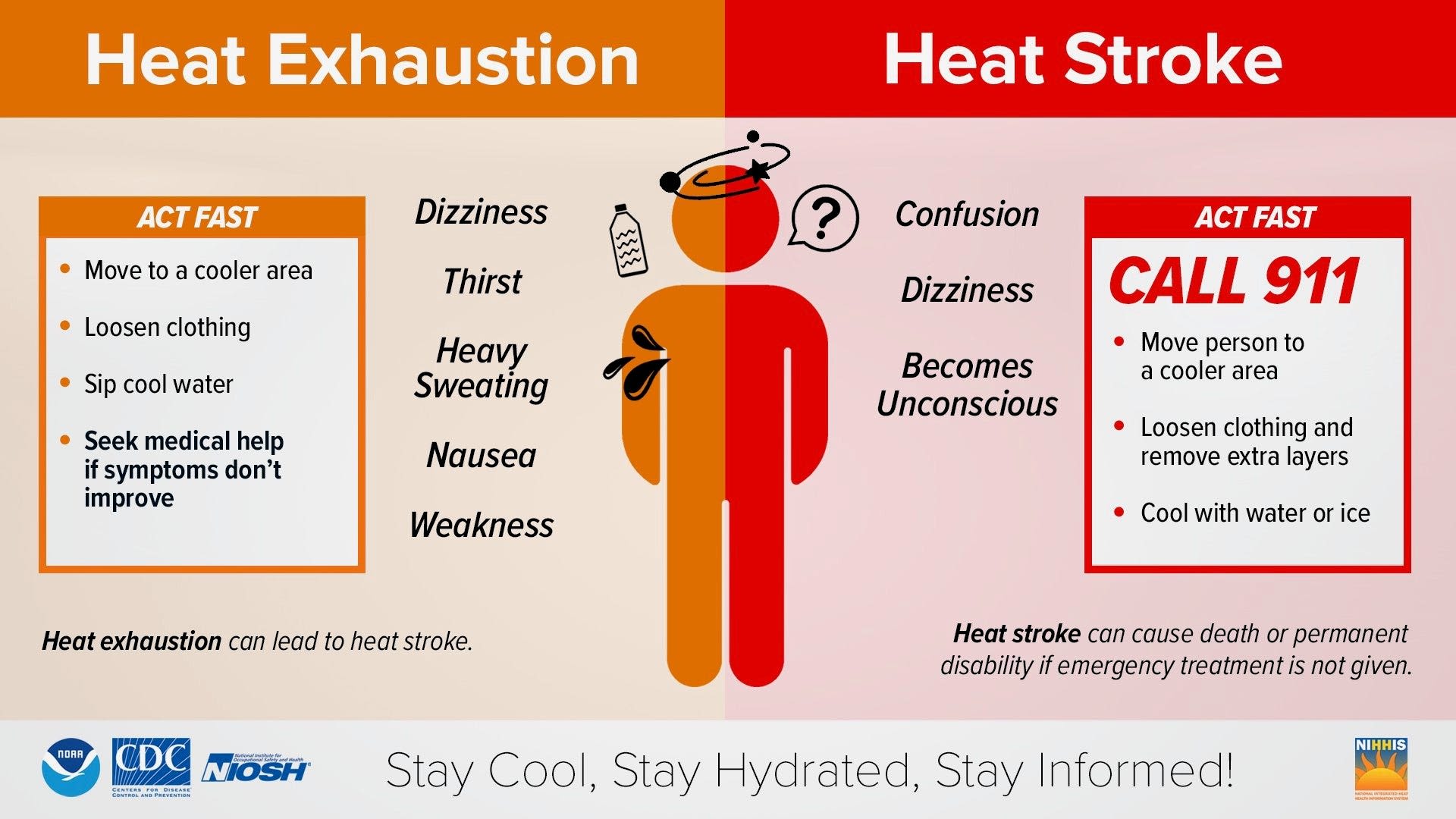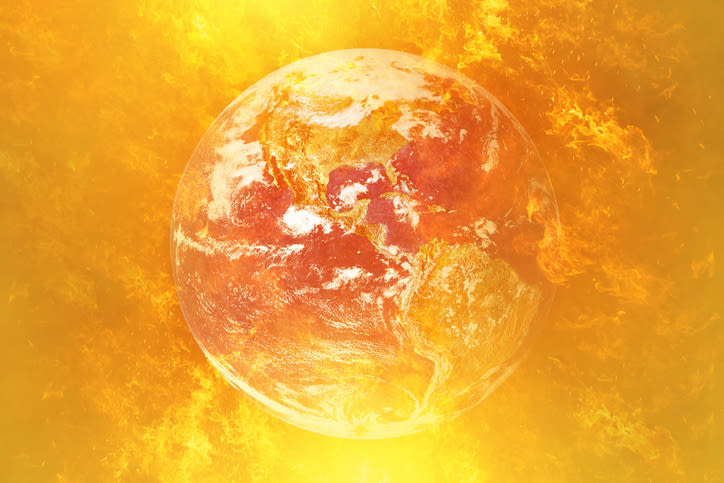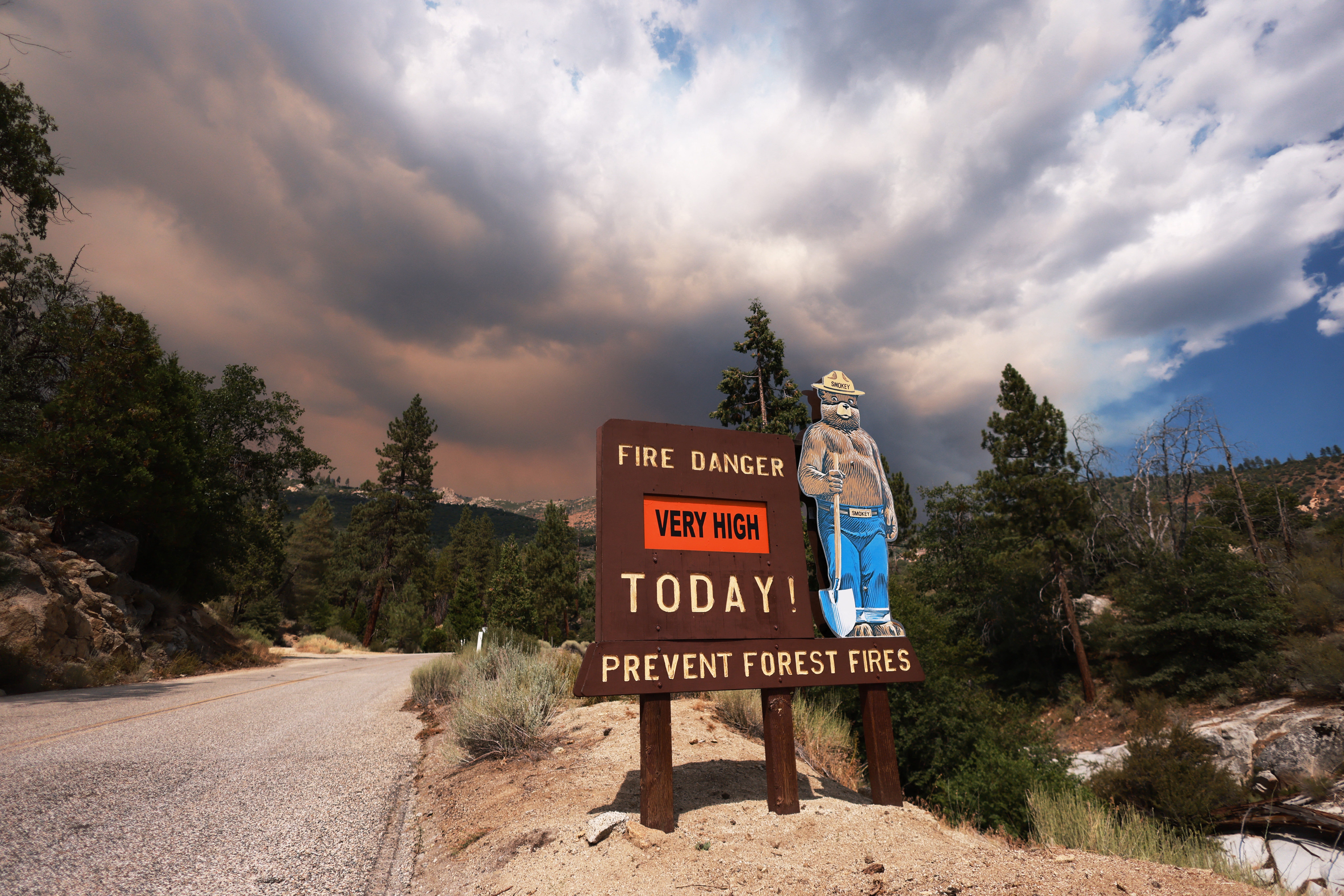Search results
Heat stroke in children can occur without proper hydration or rest. An expert at Children's Health shares how to recognize heat exhaustion & heat stroke symptoms.
Apr 6, 2023 · Infants and children younger than 4 and adults older than 65 are at higher risk of heat exhaustion. The body's ability to regulate its temperature isn't fully developed in children. In older adults, illness, medicines or other factors can affect the body's ability to control temperature.
Learn from Children's Colorado how to care for a child who has symptoms of heat exhaustion (aka heat exposure or heat stress) & heat stress prevention.
For cases of heat exhaustion or while awaiting help for a child with possible heatstroke: Bring the child indoors or into the shade right away. Undress the child.
News about heat exhaustion, Treasure Coast, treatment
News about Belyruth Ordonez, Utah, heat exhaustion
Also in the news
Heat exhaustion occurs when your child is hot, sweats a lot, and does not drink enough to replace the lost fluids. Heat exhaustion is not the same as heatstroke, which is much more serious. Heatstroke can lead to problems with many different organs and can be life-threatening.
Jun 15, 2021 · How to spot, treat and prevent heat-related illness in your child. Kids can seem like they have endless energy. But in hot weather, playing too hard and for too long can lead to heat-related illness—including its most severe and life-threatening form, heatstroke.
Jul 18, 2023 · In 2022, 33 children in the United States died from heatstroke. “Heatstroke is a serious medical condition. Children feel heat and humidity faster and more severely than adults and have a harder time cooling down,” says Columbia pediatrician Connie Kostacos, MD .
Jun 27, 2022 · We often think of the basics for our kids, like sunscreen and a water bottle. But when the temperatures rise, knowing how to spot the signs of heat exhaustion and heat stroke is critical to their health and safety.
Jun 14, 2022 · If your child is experiencing heat cramps, they’ll need electrolytes and salt, like potato chips or pickle juice, in addition to water. A real red flag is exhaustion and vomiting. These are dangerous signs of possible heat stroke and could mean a child is fluid deficient and their body temperature is too hot.
A child’s temperature is higher than normal during heat exhaustion, but less than 104 degrees Fahrenheit. If heat exhaustion is not treated, it can lead to heatstroke. What to do if your child has symptoms of heat exhaustion: Quickly get your child out of the heat and into a cool place.



